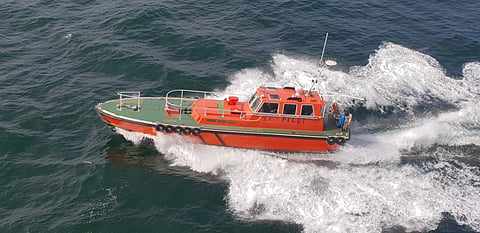

Lars Sigvardt, President of the Danish Maritime Pilots' Association, spoke to Baird Maritime about the state of the pilotage industry in Denmark.
How is business? Is the pilotage industry in your country strong or weak currently compared to history?
In Denmark, the ports are undergoing a change. Many smaller coastal ports are closing.
For the transit passages, it is mainly driven by Russian oil exports via the Danish straits (half a million tonnes per day). IMO Resolution 263 recommends ships with a draught over 11 metres use the pilot services established by the coastal state, so here the number is rising.
We also see more and more ULCVs (ultra large container vessels).
Have there been any big changes to your country's ports over the last year that have affected the pilotage industry?
A few ports are developing and investing. Regarding pilotage, the general obligation to use pilot is very liberal i.e. you can dock any size cruise vessel in Copenhagen without using a pilot.
So the general picture is that fewer smaller ships are using pilots in Danish ports.
How many vessels have entered the fleet over approximately the last year?
The state pilot company invested in a new pilot boat fleet comprising approximately 10 new boats over the last few years. Other small operators do not have finances to invest.
What do pilot boat operators in your country look for in particular when purchasing a new vessel?
The state must make a public tender, looking for price and running costs.
The state pilot company is not a pilot-run company, but run by non-pilot managers and financial people, so running cost on the boats come high on the list.
Sadly, the heavy weather ability means weight, less speed. So we got very light boats. Always a compromise. Here in the high north we have a lot of bad weather.
Are there geographical/weather conditions specific to certain areas that affect the design of new pilot boats?
There should have been two sizes: 15-metre and 20-metre boats. We need real heavy weather boats to ensure the transit passage.
We have shallow waters and often operate 10 nautical miles offshore. In some places we have really bad weather conditions.
Is there a favoured building material? Why?
Aluminium. Historically, Denmark had bad experiences in the 1970s building fibreglass boats. Nobody has started with composites yet. Furthermore, the closer to the Baltic you get, the more fresh the water gets, so corrosion is not a major problem.
Do you foresee many newbuilds being delivered in the next year or so?
No. The state pilot company has completed the renewal of the fleet.
How do you see the short-term future of pilotage in your country?
We see upcoming one-man pilot companies being allowed by legislators to cherrypick and still be called pilotage.
Are the operators making or preparing to make any changes to their operations due to market influences?
Pilotage is not a market, it is a service in the public interest. The administration permits and forces pilots to use elderly or unsuitable vessels (like tugs) to execute transfers. This is not good.
Are the operators making or preparing to make any changes to their operations due to government/regulatory influences?
Hopefully, the Danish maritime pilot association will press for rules, and improvements to make pilot transfer as safe as possible.
